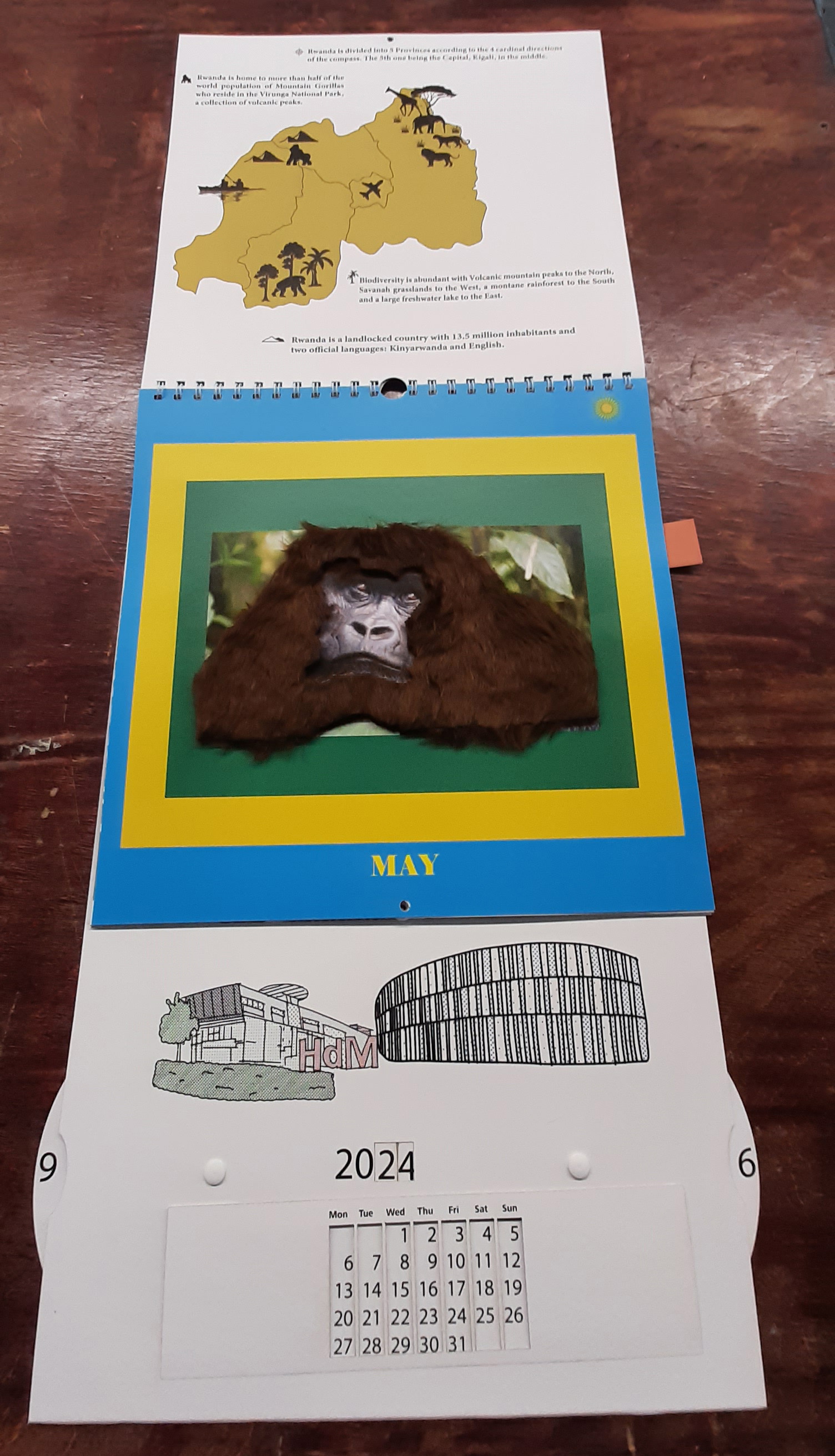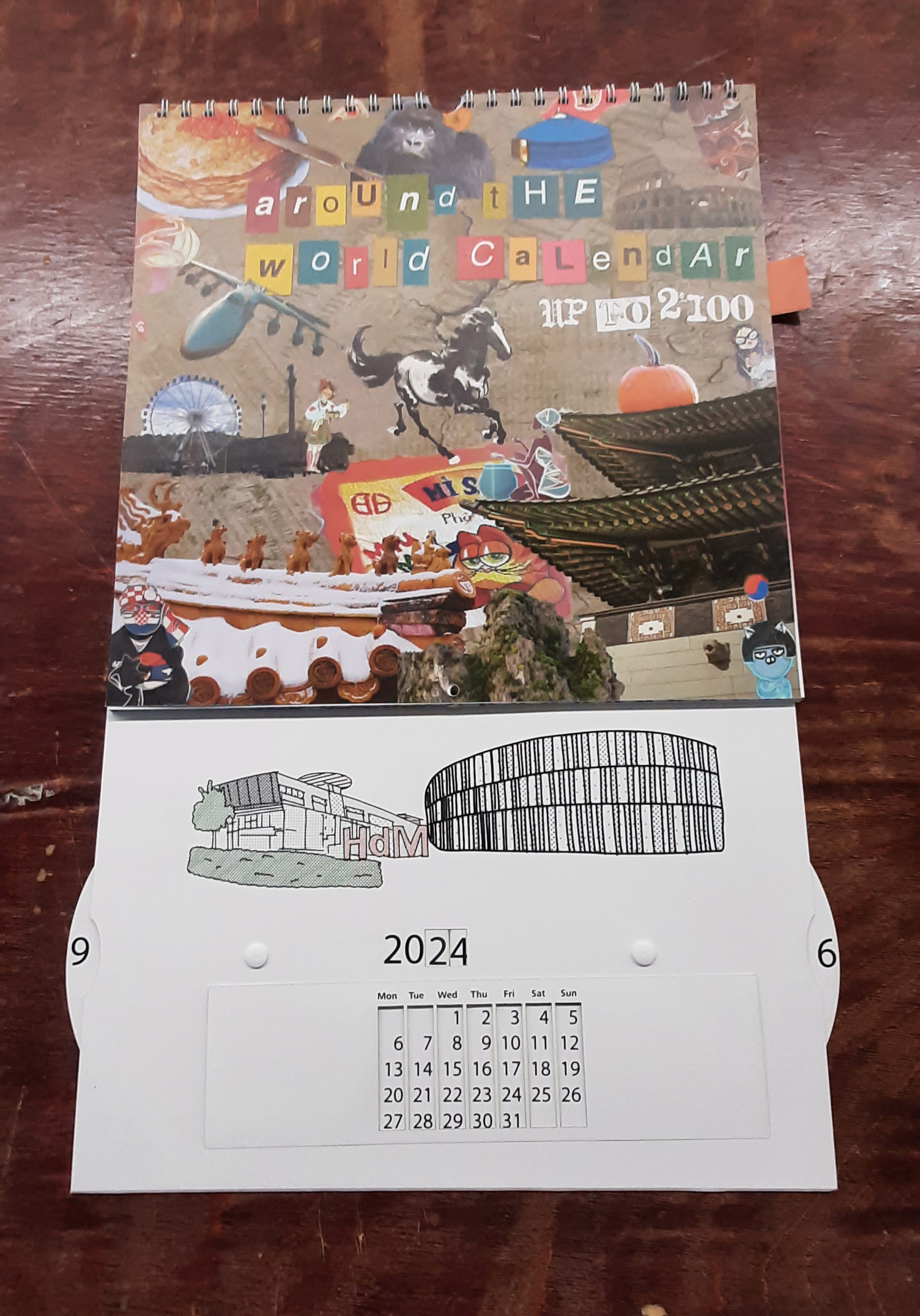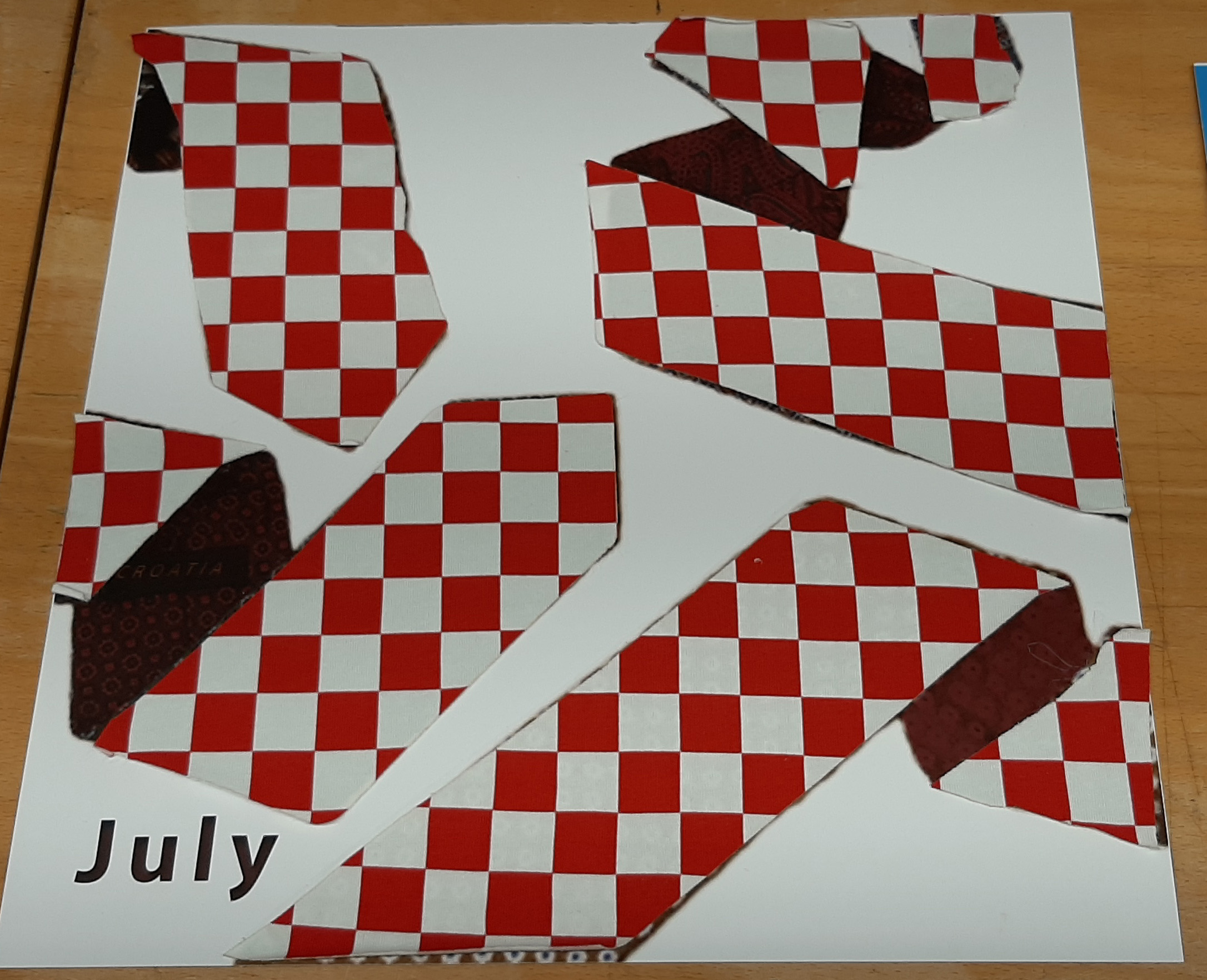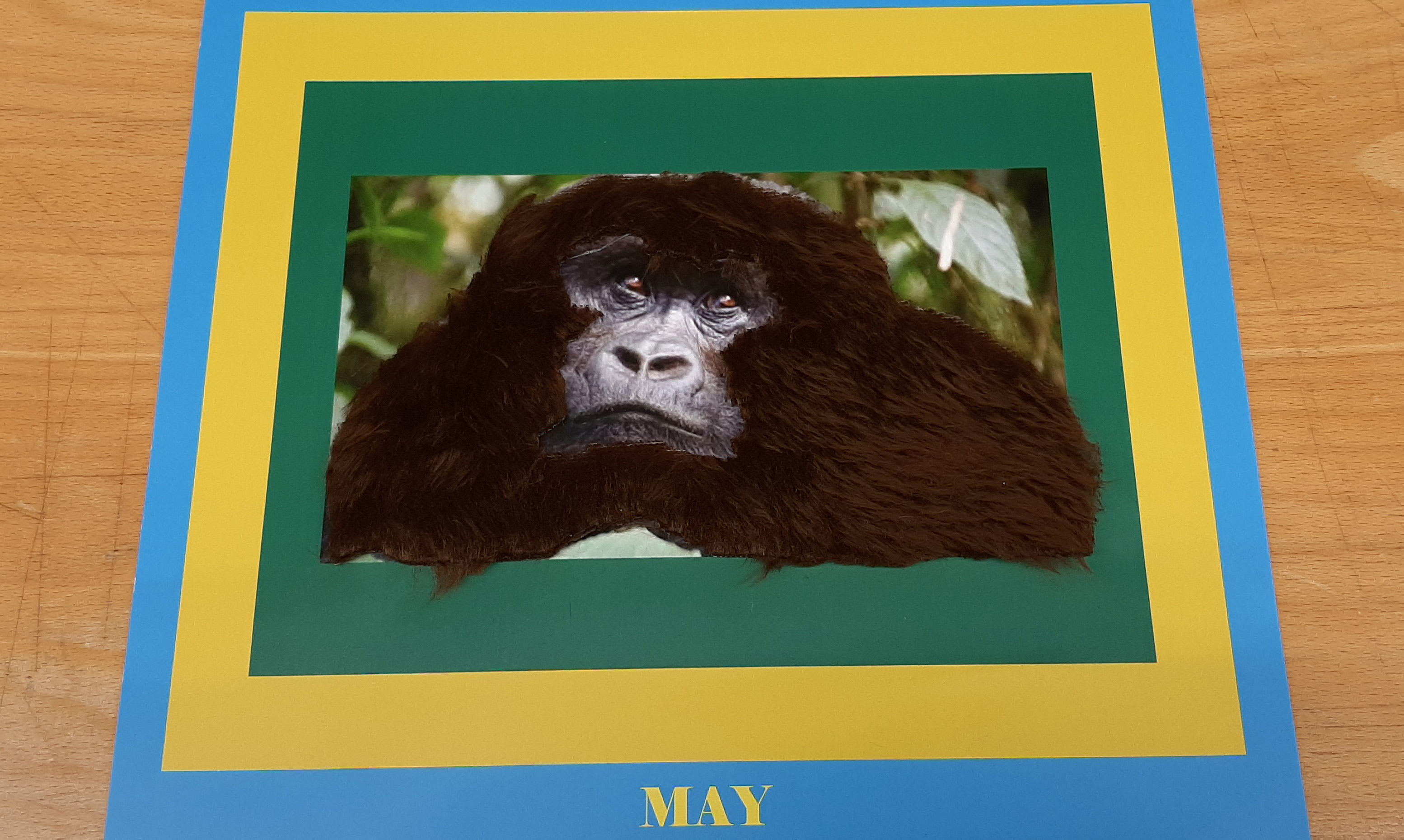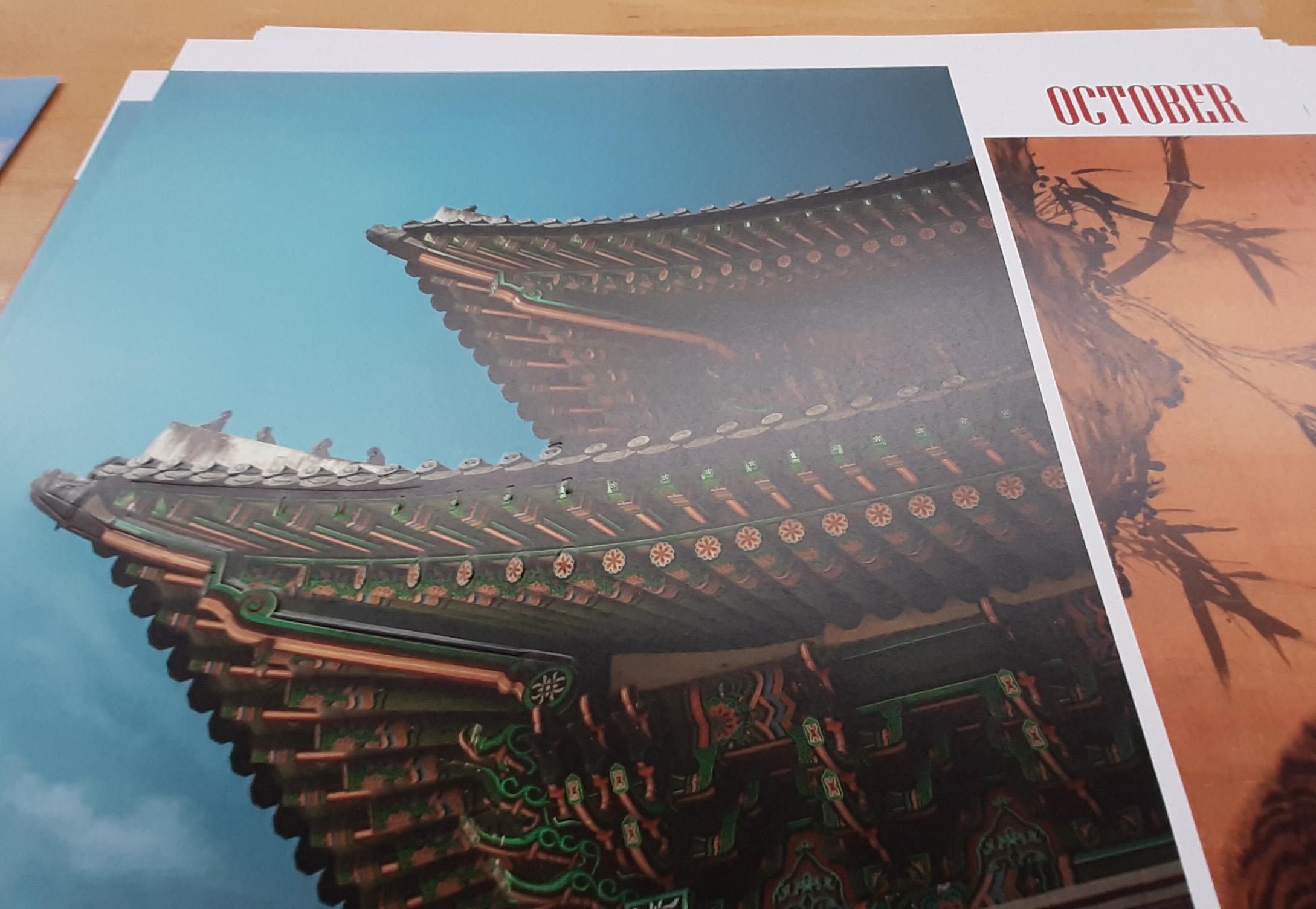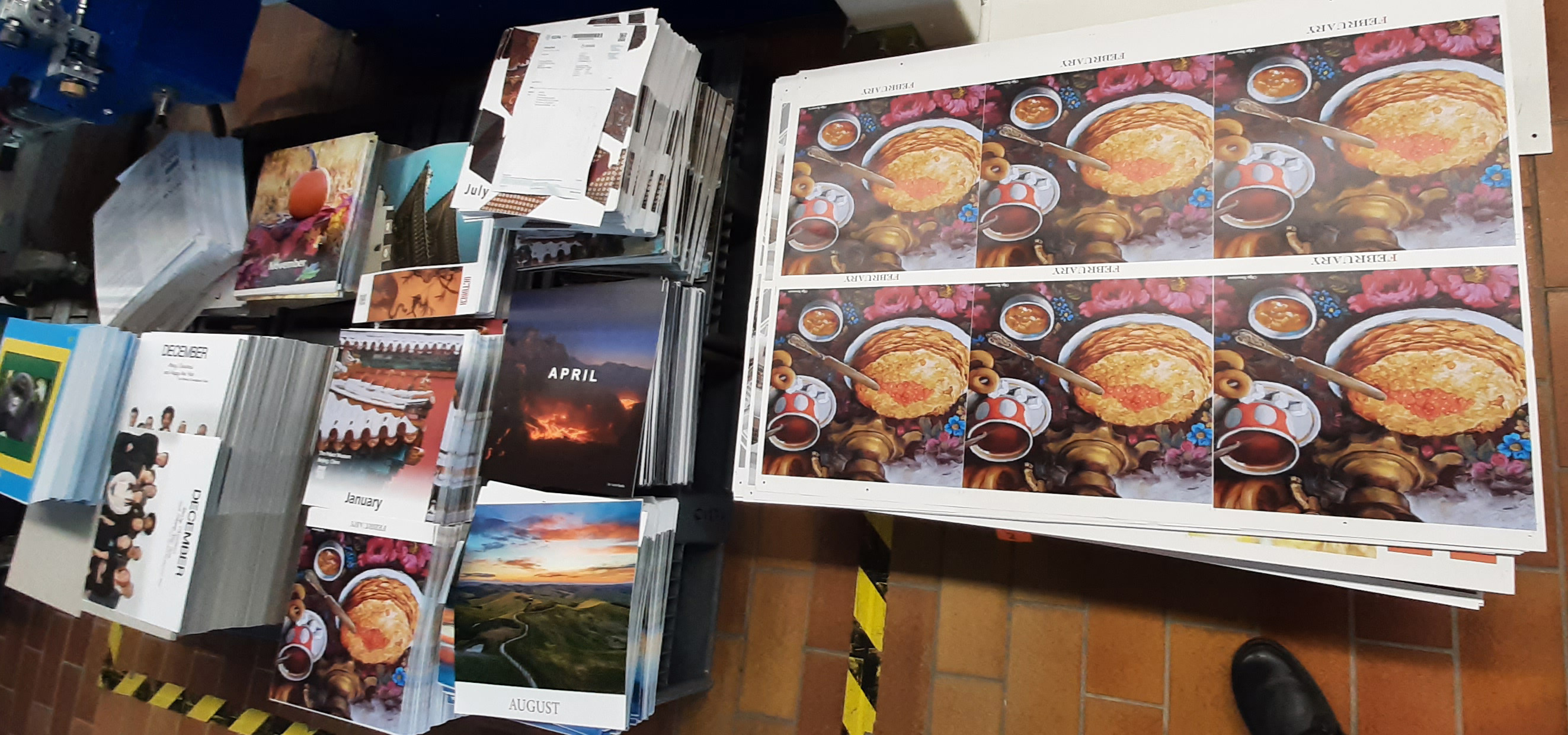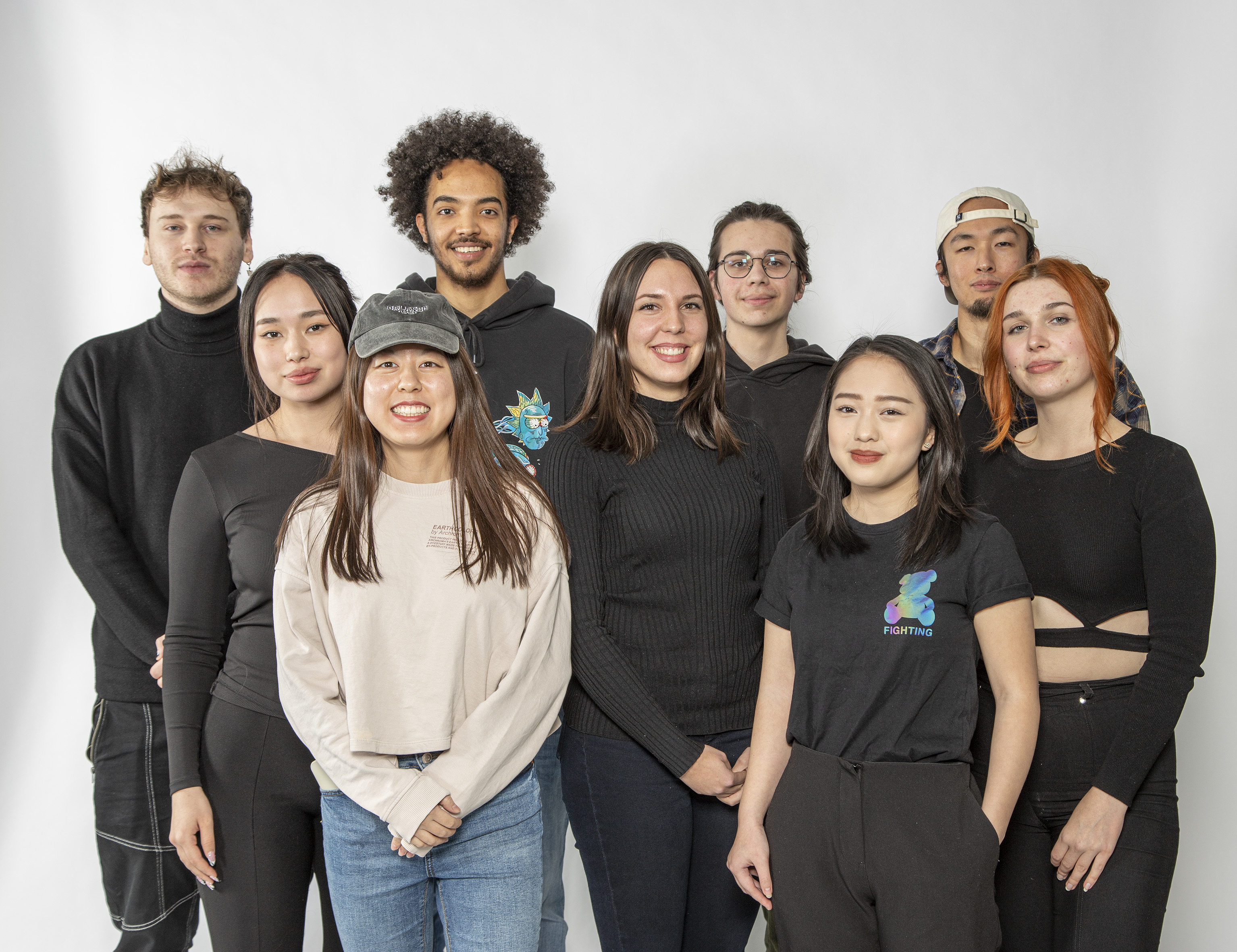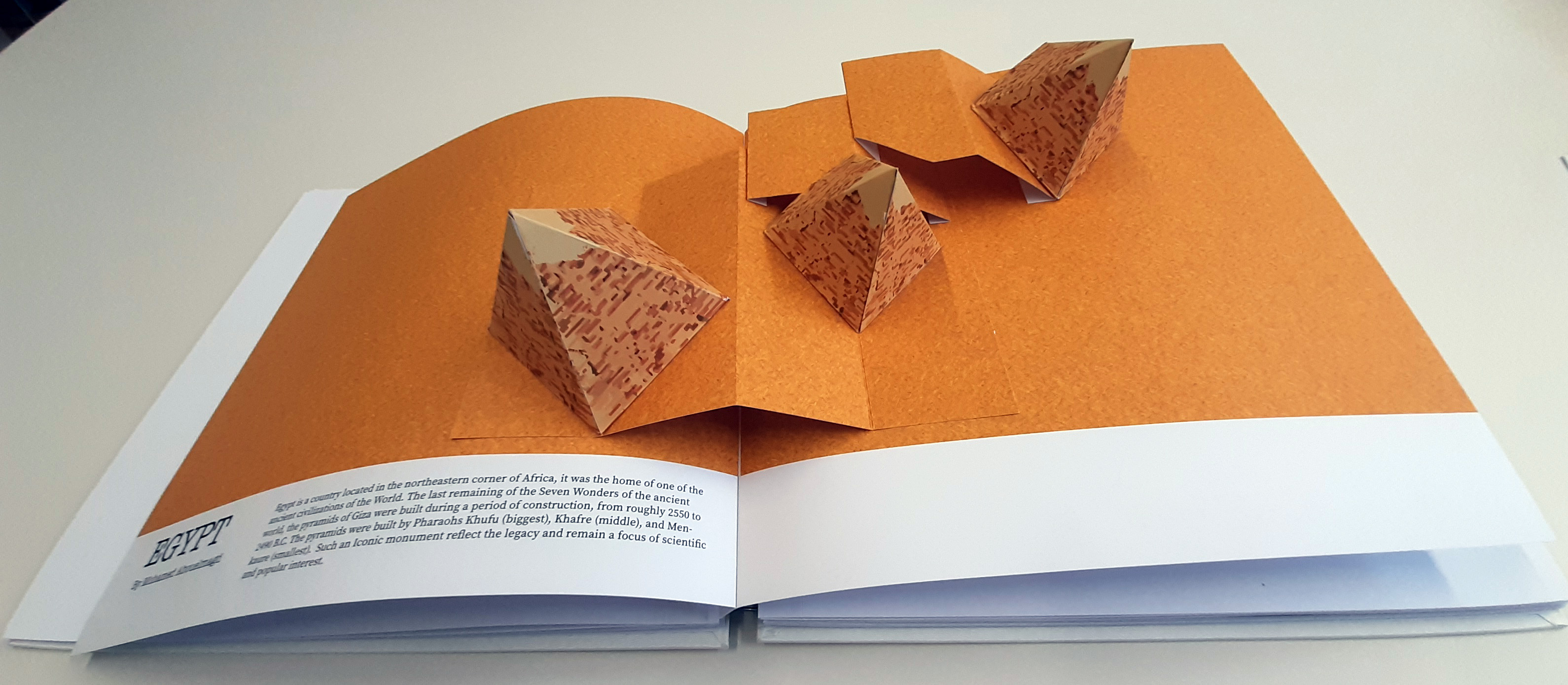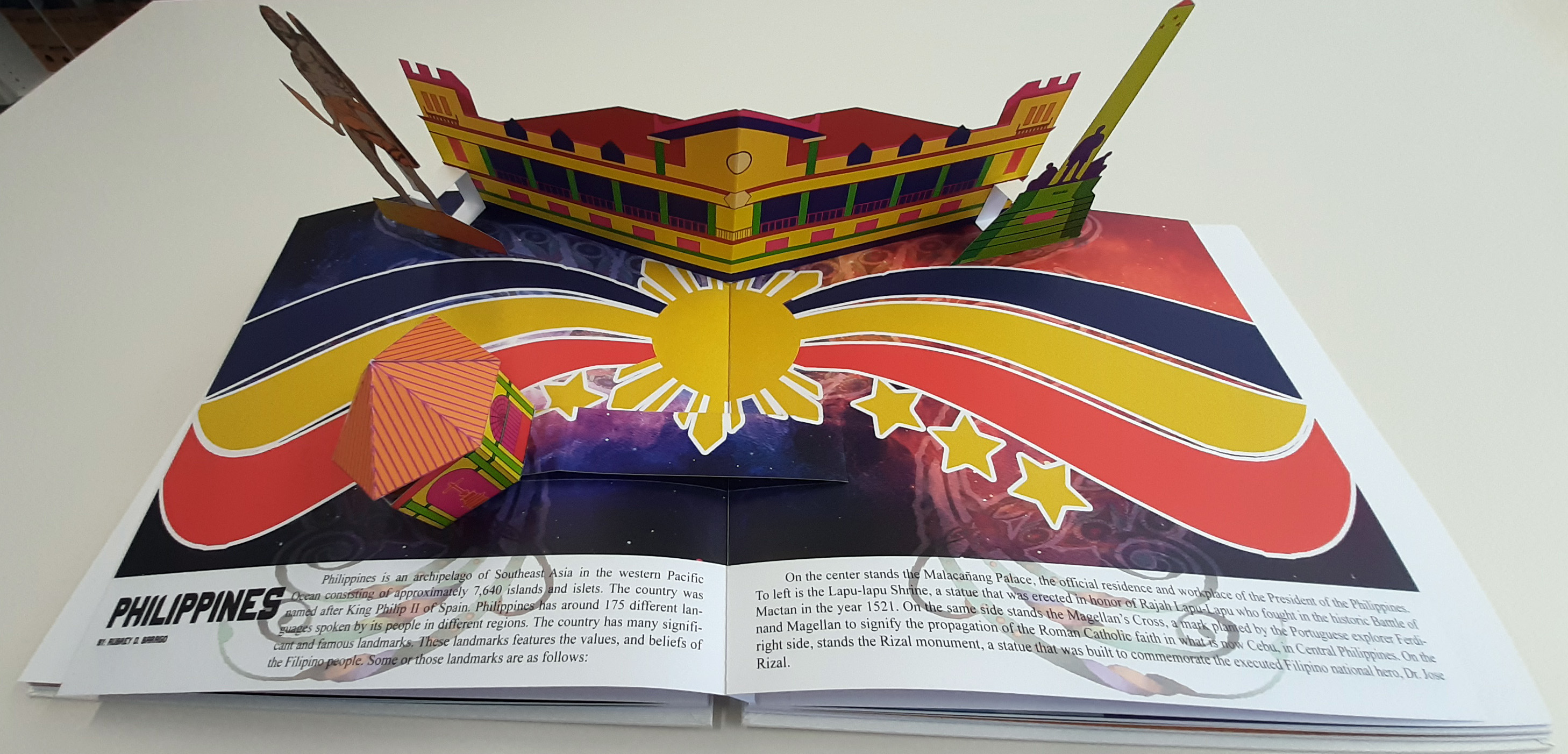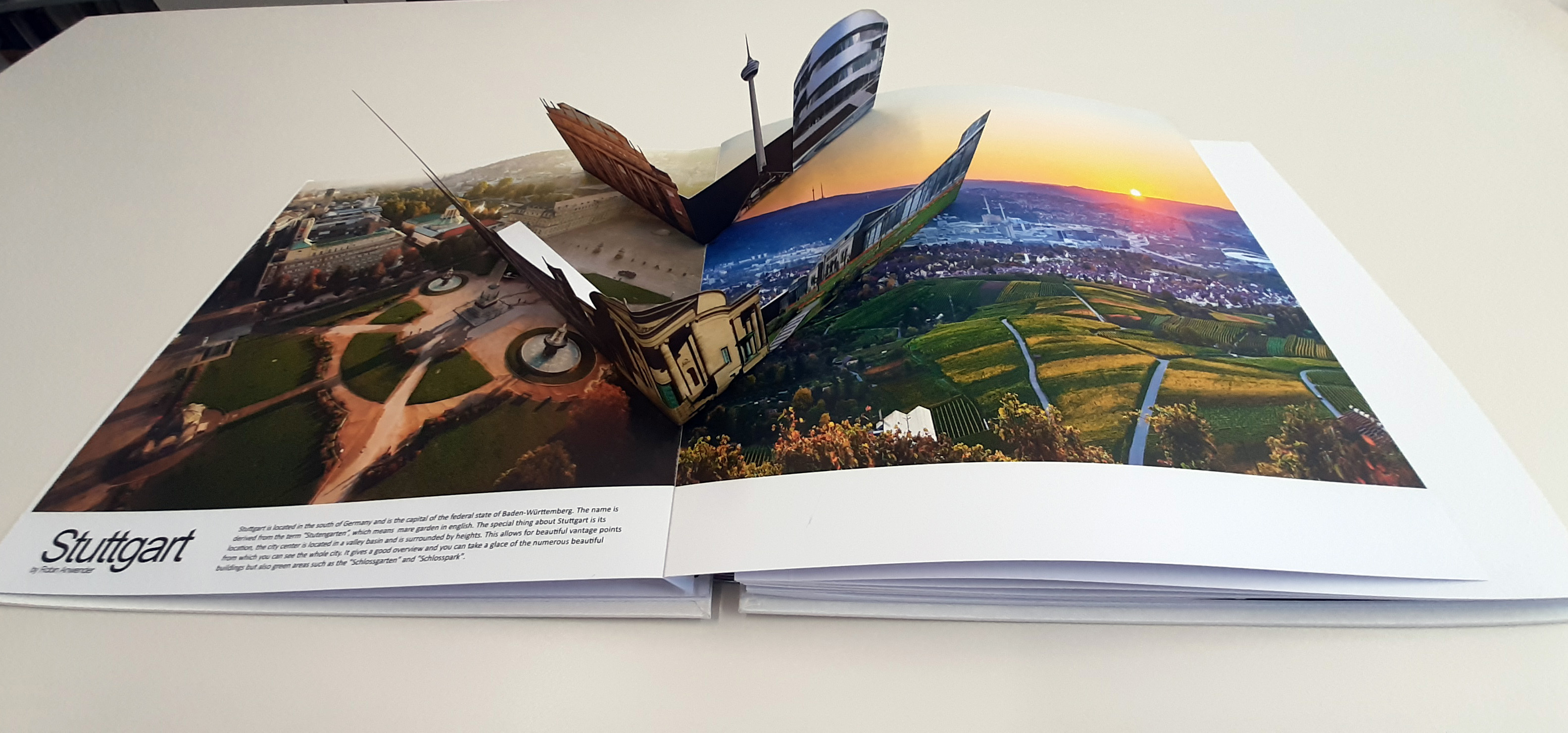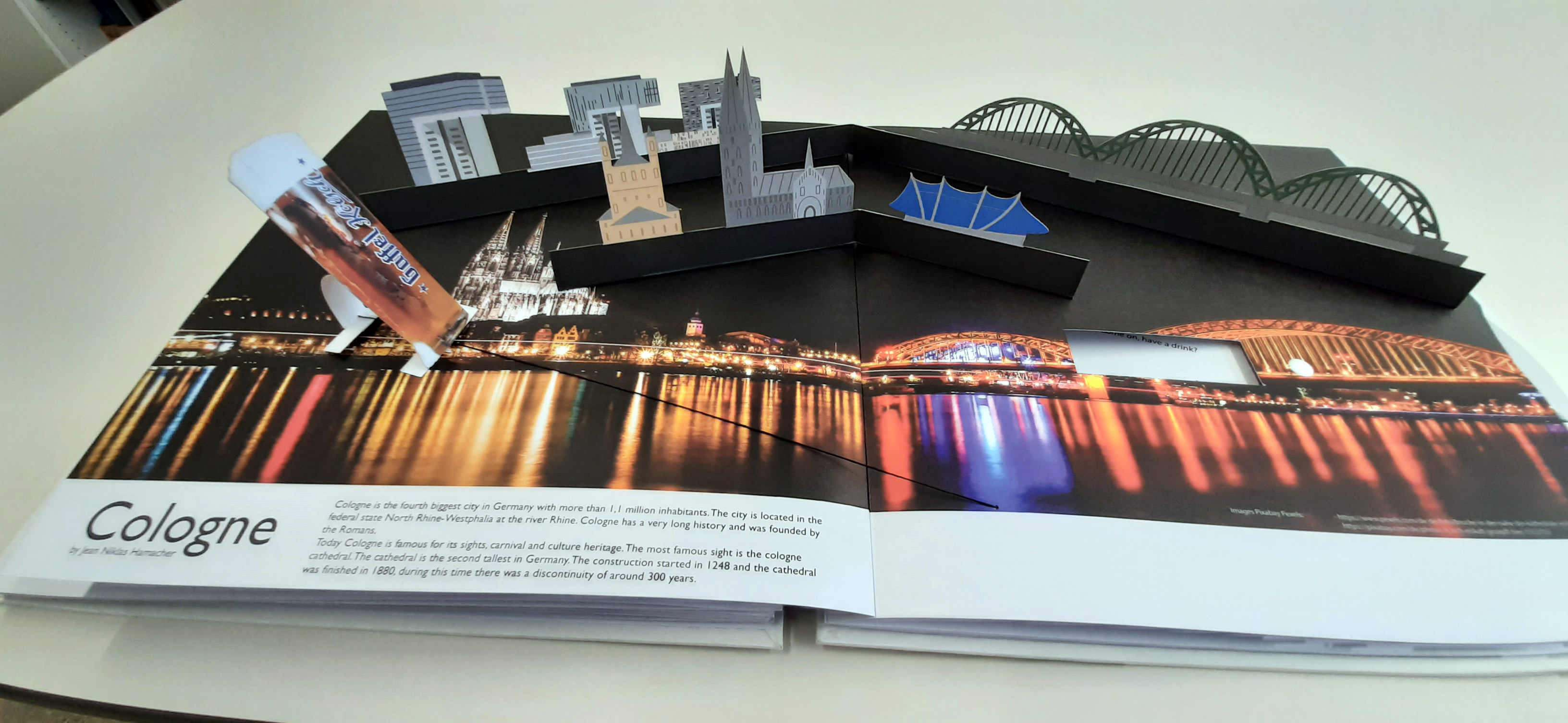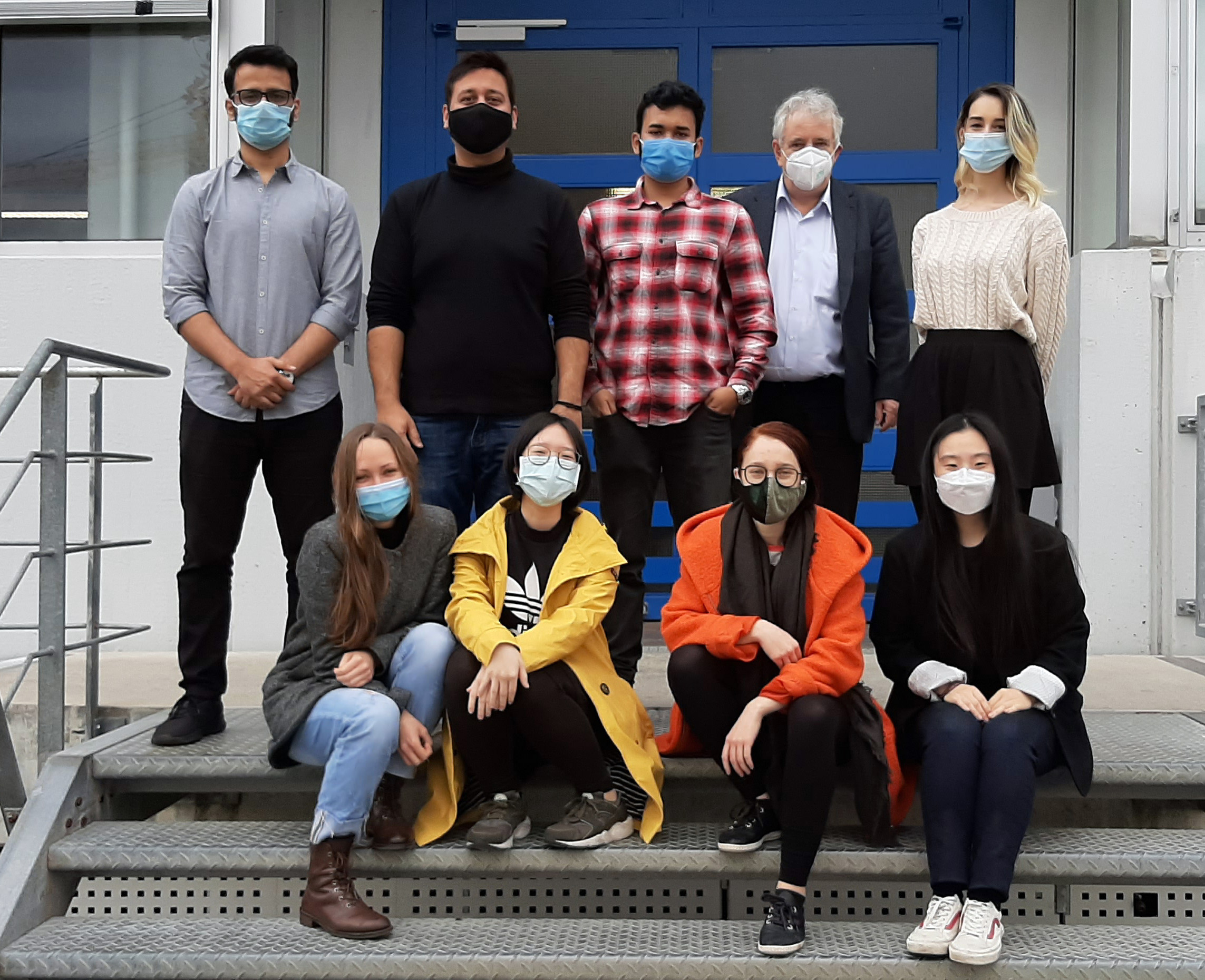Product Development
Project Development is a central course in the main study period and extends over two consecutive semesters comprising of the parts 'product design' and 'realization'.
On the basis of a given task, practical experience for the realization of a graphic product is to be gained in a group.
In the first semester of the project, the focus is on the conceptual phase, in which a finished concept of the targeted product is to be developed through intensive group dynamic processes and test runs to make sure that there are no surprises or technical obstacles for the realization. The project will be continued with the same project group in the following semester in the realization phase with carrying out the physical processes e.g. printing plate production, printing, print processing and finishing.
Recent course:
WS2022/2023 till SS2023
A monthly calendar beyond the usual.
The calendar has a static back (2mm thick book binding cardboard) which contains the mechanics of the perpetual calendar. The monthly sheets have a square format. You can hang the calendar on the wall in two ways: Either with the standard calendar hanger or using the reinforced hole at the bottom/top of the monthly pages. Whenever possible, we have used the golden ratio: a/b=1.618.
The years are selected by a two-wheel mechanism.The order of the weeks in the month can be set by sliding the mask held by magnets over the days.
Each student designed a front and a back monthly page by choosing a landmark or special motif from her or his home country. The front page is a “nice” motif, and the back page can contain more explanations of the motif shown or more information on the country.
To show the possibilities of printing technology each month page shows a gimmick or effect.
Here is the list of the month pages with detailed explanations:
| Month | who | Country | motif | effect |
| Jan | Mengtong | China | roof of temple | screen printing of snow with white glossy par-ticles in ink | Feb | Polina | Russia | Pancake with caviar | Topping high gloss varnished in screen printing | Mar | Oleksander | Ukraine | Huge Antonov airplane | high gloss varnish Scodix (UV Inkjet) | Apr | Cholponai | Kyrgyzstan | Landscape with illuminated houses | Screen printing: Fluorescent “Neon”-ink | May | Hugo | Ruanda | Last Gorillas | Gorilla (fake) fur. Laser cut fur glued on sheet. | Jun | Youngsoo | Korea | Stuttgart city library | high gloss varnish Scodix (UV Inkjet) | Jul | Bianca | Croatia | Ties have been invented in Croatia | Laser cut of real textile (Croatian colours) and glued on print | Aug | Fahim | Italy | Lombardia landscape | Lake and letters: high gloss varnished in screen printing | Sept | Hang | Vietnam | Front: coast landscape, Back: Rice and Coffee | Water: high gloss varnish Scodix (UV Inkjet). Coffee: screen printing of ink with coffee scent (rub to activate) | Oct | Youngsoo | Korea | Korean temple scene | Roofs: 3 height level embossing | Nov | Gunter | Germany | Pumpkin rising on Halloween | pop-up effect | Dec | all | No effect |
Here the list of previous projects:
WS2021/2022 till SS2022
The topic the students chose was a book about sustainability. Besides the implementation of pop-ups the book contains some more printing technology highlights. The sustainable specialty of this book is the use of a paper made 100% from hemp provided by the company Gmund. The paper was printed for the first time at the HdM and required a bit of intuition. Further, the students wanted to experiment with printed electronics. Therefore, particularly noteworthy is the direct connection of LEDs with solar cells. No control electronics are necessary here. If the book is opened at this point, light falls on the solar cells and the LED lights up. The pop-up page showing a smart printing house is also innovative. It has a magnetic switch (reed contact), which turns on the power for a LED provided by a coin cell battery. Since the battery should be replaceable, we decided to use a suitable holder. However, this has a thickness of several millimetres. The opposite pages were therefore cut out with a laser cutter so that the book closes sufficiently.
Again thanks to the
MVK insurance (formerly Medien-Versicherung)for the financial support.
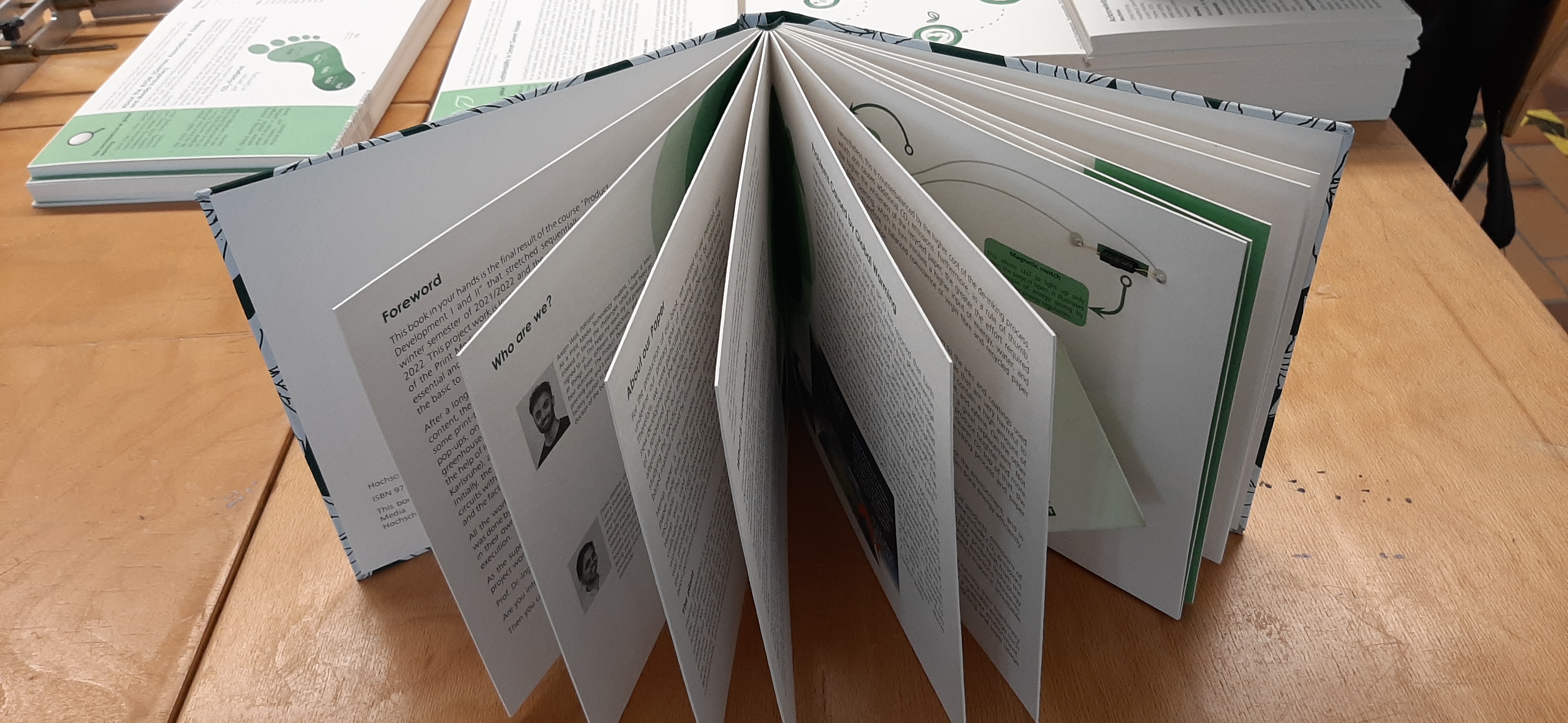
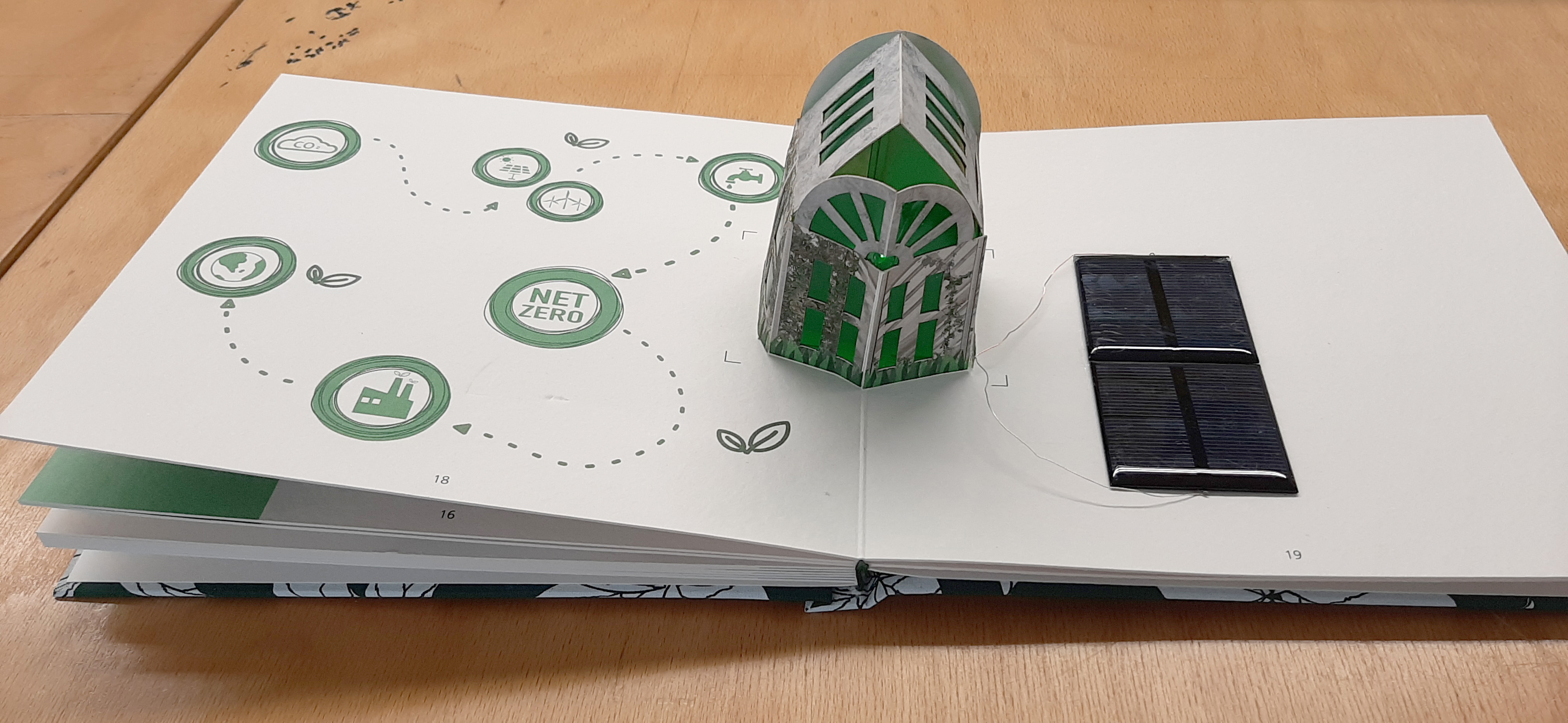
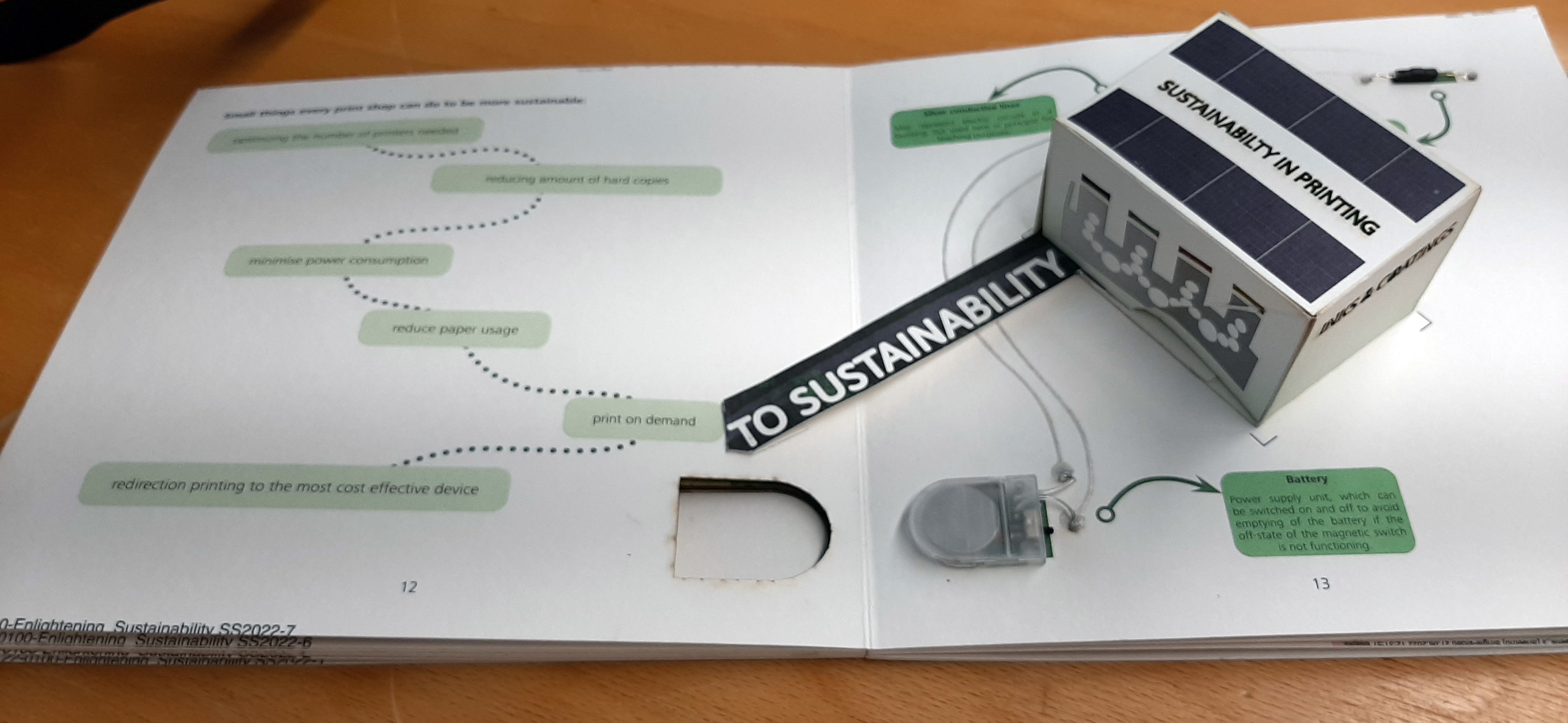
This book was nominated for the 2022 Druck and Medien Award.
WS2020/2021 till SS2021 "Turn Off Your Pop-up Blocker"
Every participant from our international study course created a popup with landmarks either from her or his home country or home city. The book won first prize at the "Druck und Medien Award 2021". See also HdM press release.
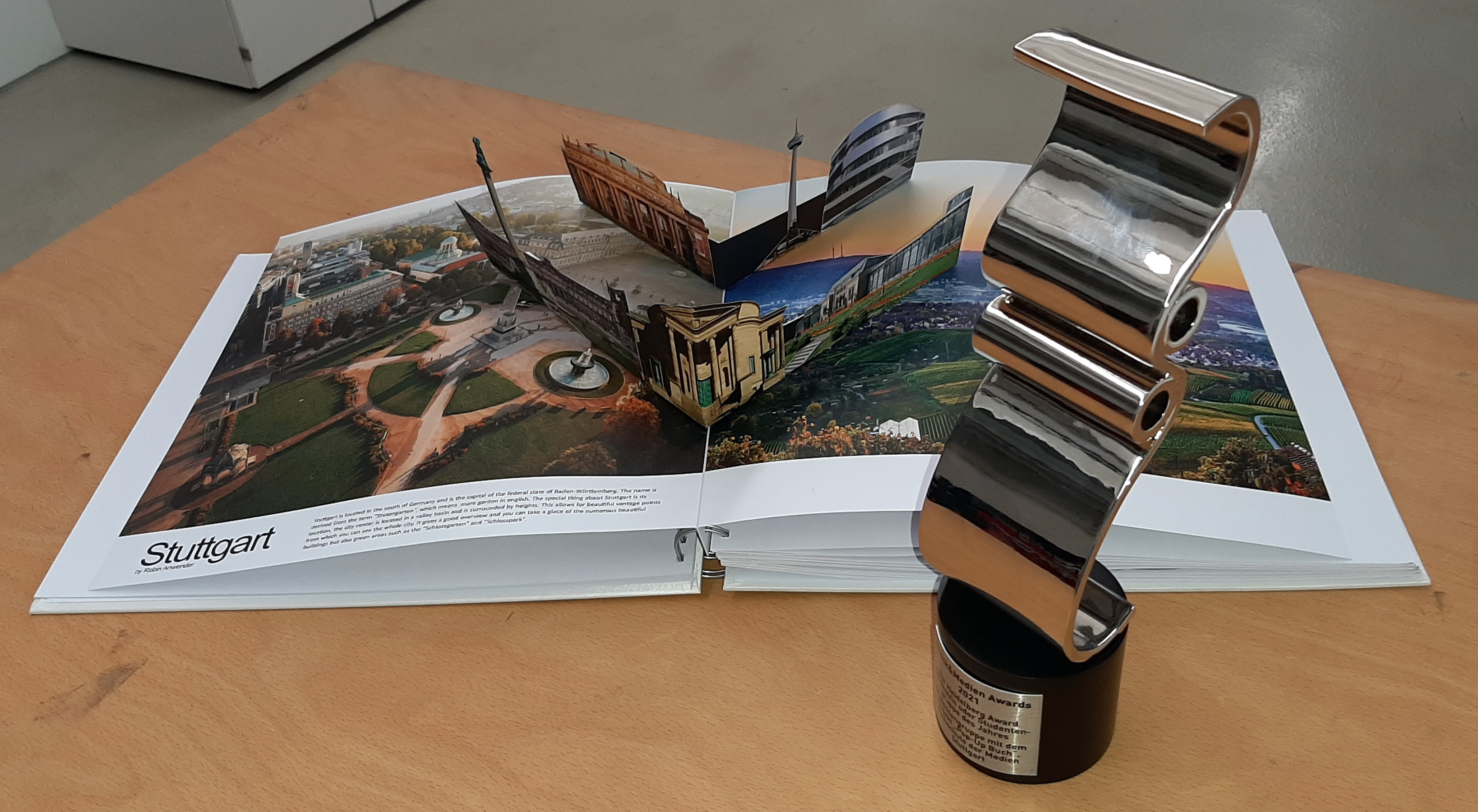
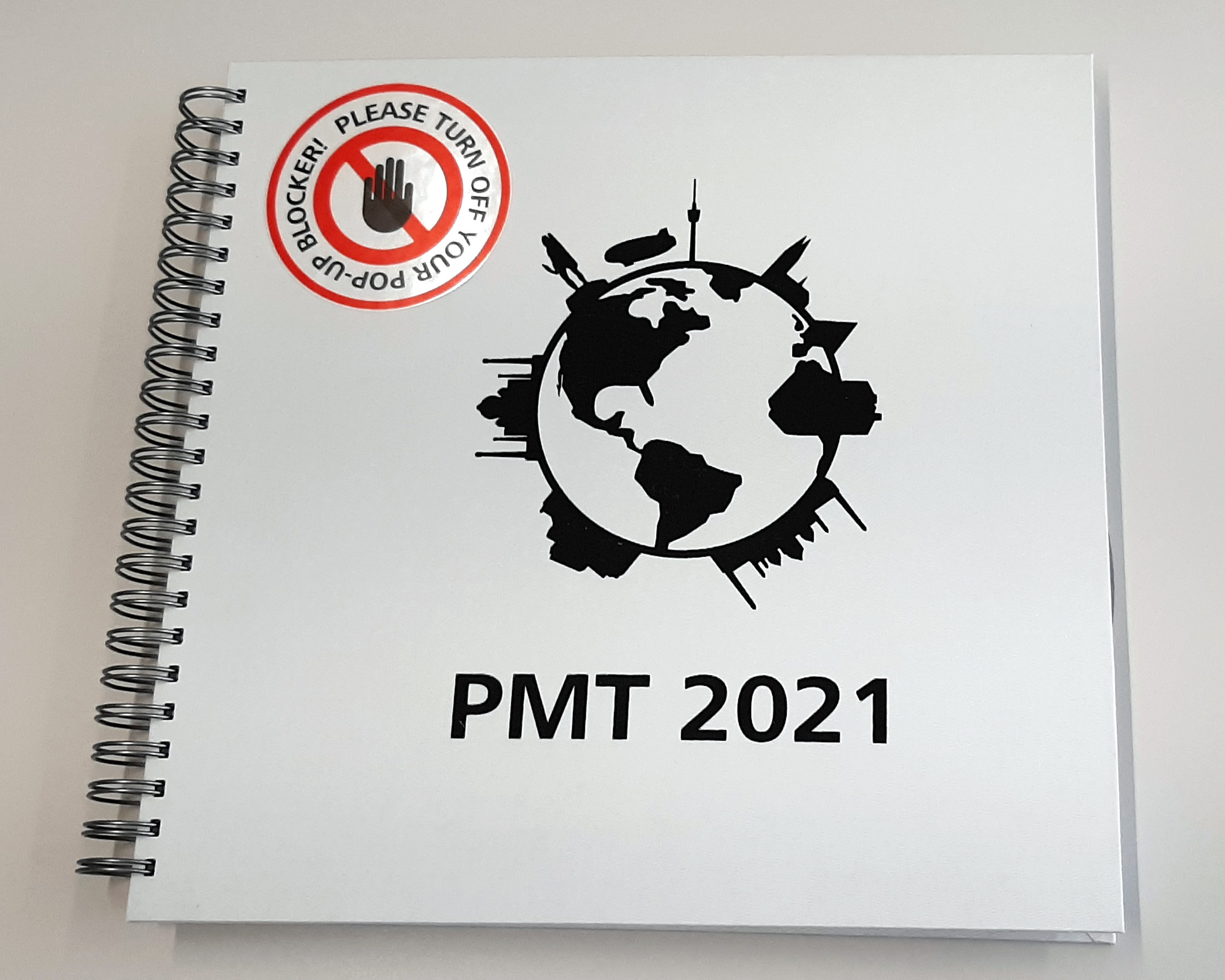
And here some pop-up examples:
SS2020 till WS2020/2021 "Book on Global Impact of COVID-19 Pandemic on Print and Media Industries"
Originally the topic of this product development course would be the organisation of the DRUPA 2020 booth.
Since the DRUPA was postponed to 2021 due to the Corona virus pandemic it was nearby to carry out a project dealing with the
impact of the Corona virus on the print and media industry.
Surveys and interviews (see picture of interviewees below) were conducted and a book about our findings was produced with the financial support of the
MVK insurance (formerly Medien-Versicherung).
The book was nominated for the "Druck
und Medien Award 2021". More information can be found in the
HdM
press release and on the
PMT project website. You can download the book as pdf
here.
Here some images:
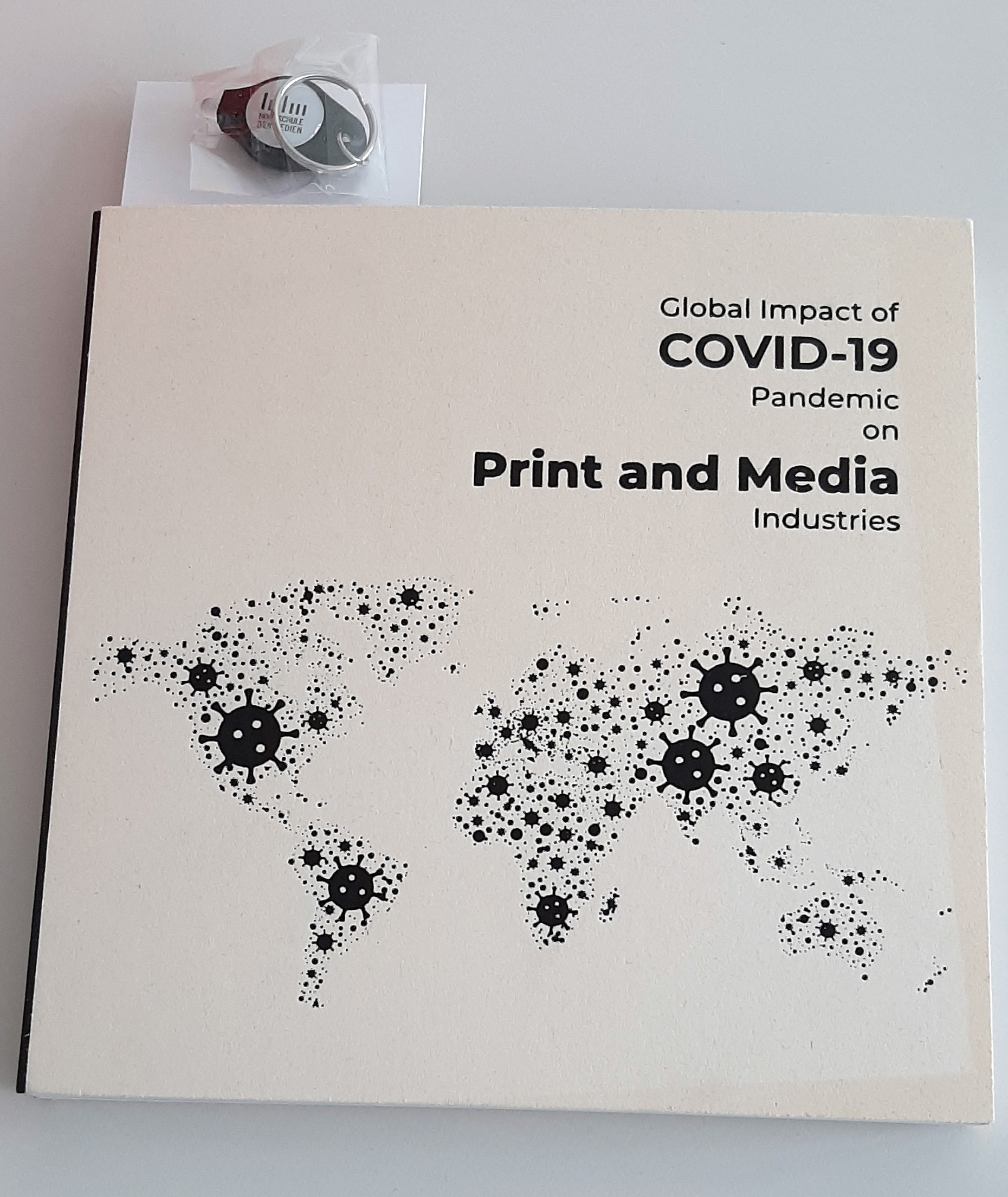
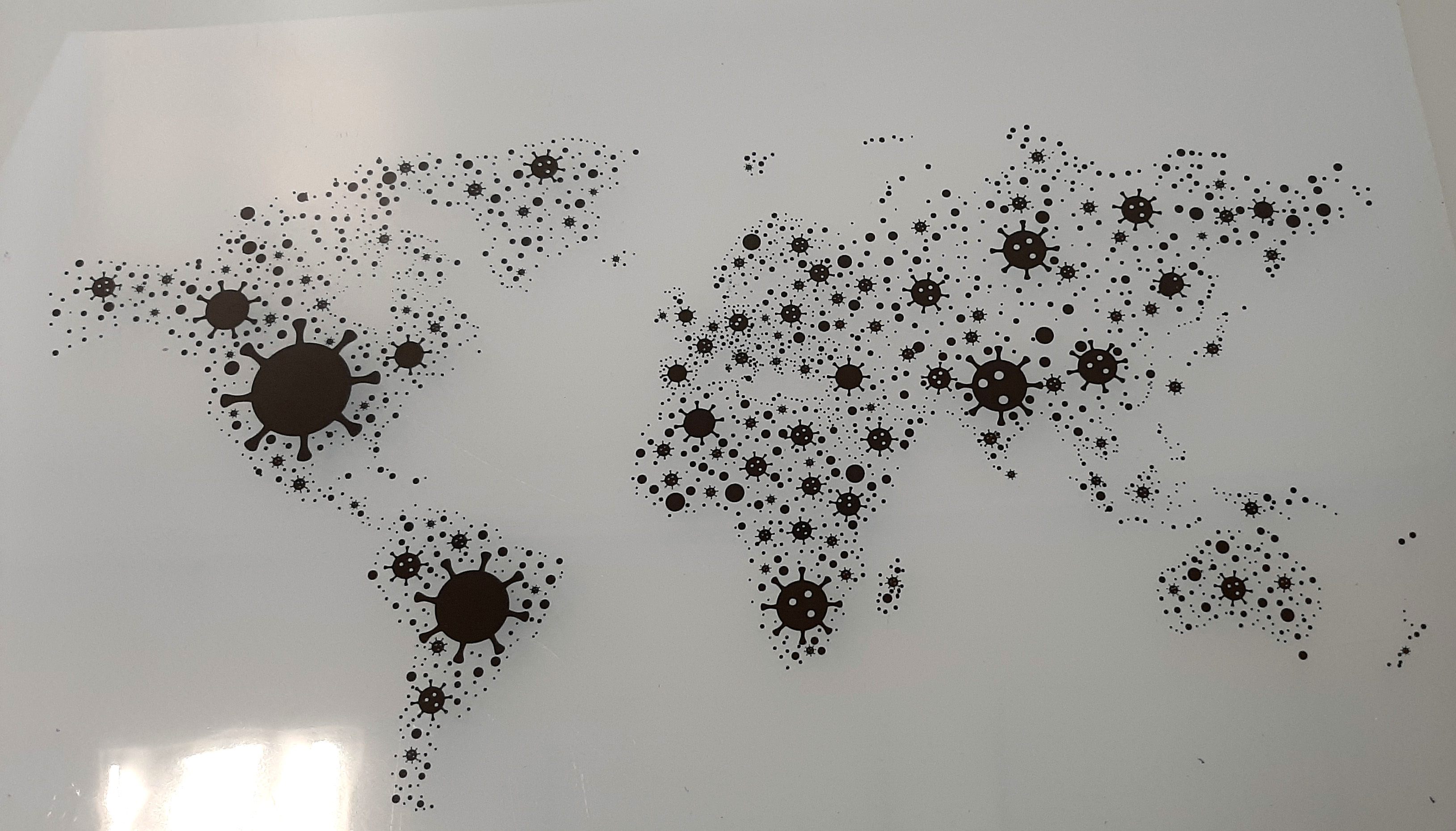
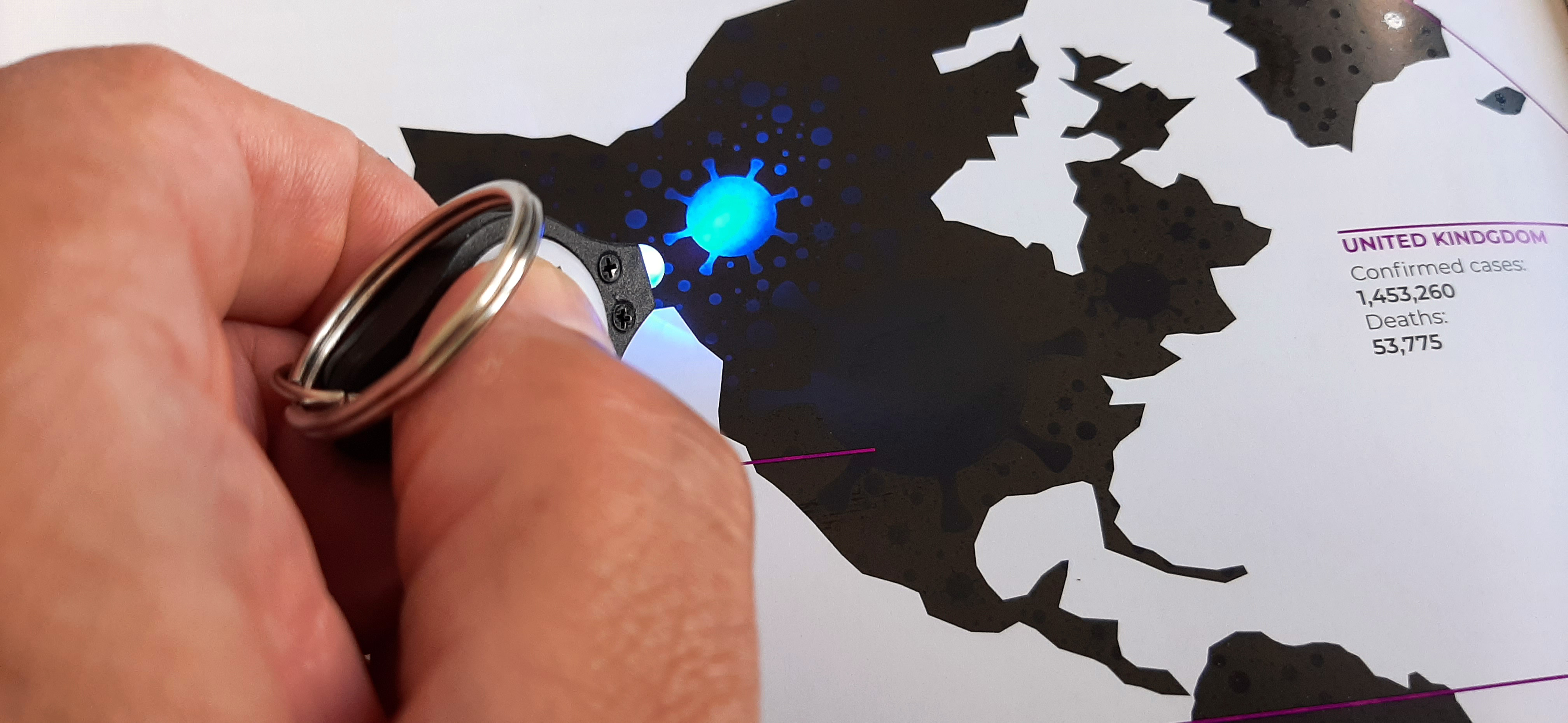
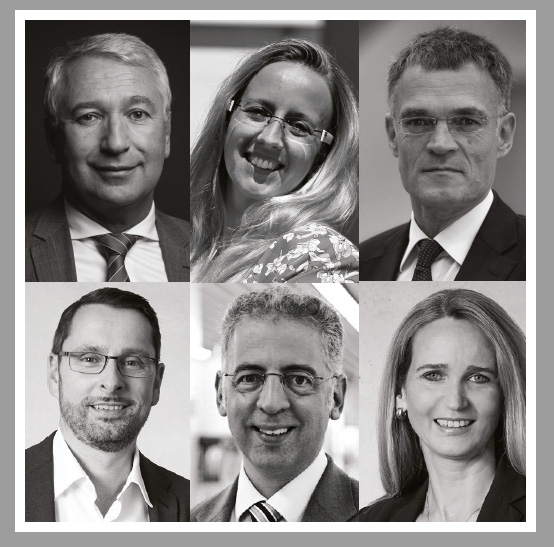
SS2019 till WS2019/2020 "Preparation for DRUPA 2020"

The central topic for this course was the preparation of the large booth (200m²) for DRUPA 2020. Similar to DRUPA 2016 we will have a very spacious booth. This time together with all our international partner universities and educational institutions under the name World Print Campus (WPC). HdM has taken over the lead to fill the booth with eyecatchers and creative exhibits to showcase modern education and research in the print and media area.
The main attraction will be the giant poster (see picture above) that is 24m by 6m, stretching along the whole rear wall of the booth. The poster is a result of about one-week photo shooting with about 20 models, all students, except "Gutenberg" with the white hair. Before that, a casting took place where the 20 were chosen out of about 70 interested. The model's dresses were either created by the members of the project group themselves (some made from paper or even 3D-printed) or by the fashion school Metzingen. Each dress corresponds to one of the main topics of the DRUPA fair, e.g. functional printing. Additionally, postcards with each model were produced and showcased at the Medianight in January 2020. All the work will be adopted from the next group organising the booth for the fair 2021.
Predecessor of this course was the Projektpraktikum 111301.

